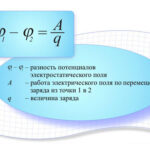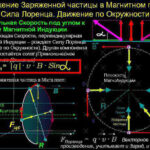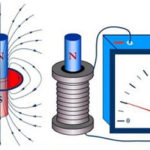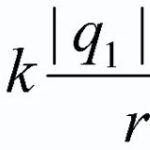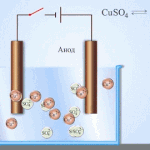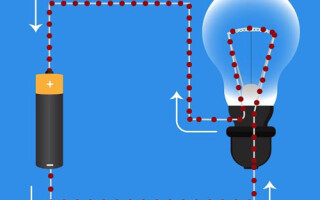If there are free charge carriers in any medium (e.g. electrons in metal), they are not at rest but move chaotically. But it is possible to make the electrons move in an orderly fashion in a given direction. Such directional motion of charged particles is called electric current.
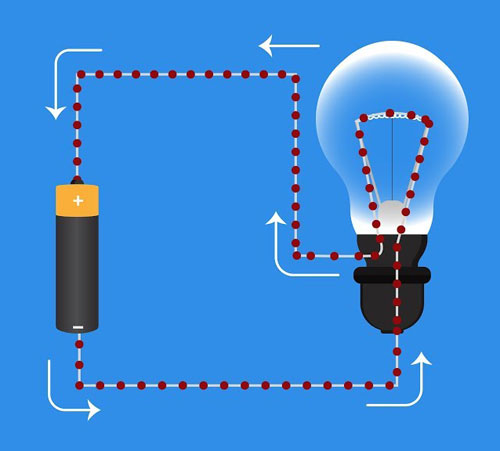
Contents
How an electric current is produced
If you take two conductors, and one of them is negatively charged (adding electrons to it) and the other is positively charged (taking away some of its electrons), an electric field will arise. If you connect both electrodes with a conductor, the field will make the electrons move in the direction opposite to the direction of the electric field strength vector, according to the direction of the electric force vector. Negatively charged particles will move from the electrode, where they are in excess, to the electrode, where they are in deficiency.
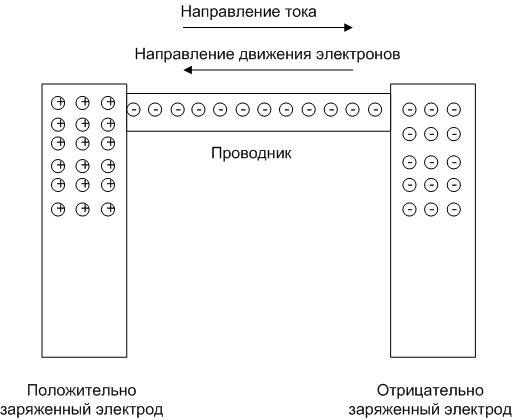
It is not necessary to give the second electrode a positive charge in order for electrons to move. The main thing is that the negative charge of the first electrode should be higher. It is even possible to charge both conductors negatively, but one conductor must have a charge greater than the other. In this case, we speak of a potential difference, which causes an electric current.
Similar to the water analogy - if you connect two vessels filled with water to different levels, there will be a flow of water. Its head will depend on the difference in levels.
Interestingly, the chaotic motion of electrons under the influence of the electric field is generally preserved, but the overall motion vector of the mass of the charge carriers becomes directional. While the "chaotic" component of motion has a speed of several tens or even hundreds of kilometers per second, the directed component has a speed of several millimeters per minute. But the impact (when the electrons along the length of the conductor come into motion) propagates at the speed of light, so electric current is said to move at a speed of 3*108 m/sec.
In the above experiment, the current in the conductor will exist for a short time, until the negatively charged conductor runs out of excess electrons, and their number at both poles is balanced. This time is short, a tiny fraction of a second.
Moving back to the initially negatively charged electrode and creating an excess charge to the carriers is not allowed by the same electric field that moved the electrons from minus to plus. Therefore, there must be a third-party force acting against and superior to the force of the electric field. In the water analogy, there must be a pump pumping water back up to the top level to create a continuous flow of water.
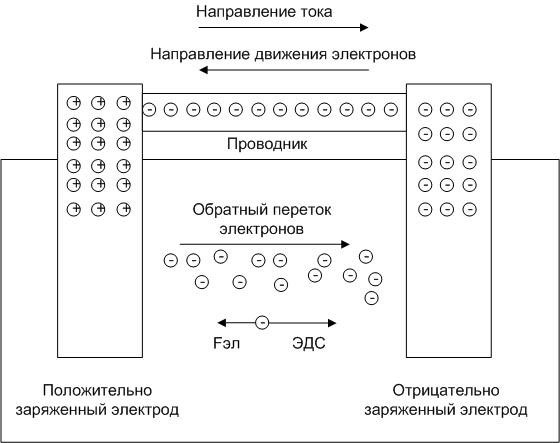
Direction of current
The direction of current is taken to be from plus to minus, that is, the direction of positively charged particles is opposite to the movement of electrons. This is due to the fact that the phenomenon of electric current was discovered much earlier than its nature was explained, and it was believed that the current goes in this direction. By that time, a large number of articles and other literature on the subject had accumulated, concepts, definitions and laws had appeared. In order not to revise the huge amount of already published material, we simply took the direction of the current against the flow of electrons.
If a current flows all the time in the same direction (even changing in strength), it is called constant current. If its direction changes, we are talking about alternating current. In practical applications, the direction changes according to some law, such as a sine wave. If the direction of current flow remains unchanged, but it periodically decreases to zero and increases to its maximum value, we are talking about a pulsed current (of various forms).
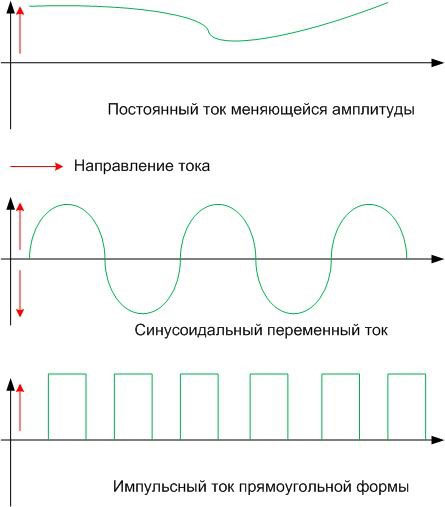
Prerequisites for maintaining electric current in a circuit
Three conditions for the existence of electric current in a closed circuit were derived above. They should be considered in more detail.
Free charge carriers
The first necessary condition for the existence of an electric current is the presence of free charge carriers. Charges do not exist separately from their carriers, so we must consider particles that can carry a charge.
In metals and other substances with a similar type of conductivity (graphite, etc.) these are free electrons. They interact weakly with the nucleus, and can leave the atom and move relatively freely within the conductor.
Also, free electrons serve as charge carriers in semiconductors, but in some cases we speak of the "hole" conductivity of this class of solids (as opposed to "electronic"). This concept is only needed to describe physical processes; in fact, the current in semiconductors is the same movement of electrons. Materials in which electrons cannot leave the atom are dielectrics. No current is generated in them.
In liquids, positive and negative ions carry a charge. Here we mean liquids which are electrolytes. For example, water in which salt is dissolved. Water itself is electrically quite neutral, but solids and liquids dissolve and dissociate (disintegrate) to form positive and negative ions when exposed to it. And in molten metals (e.g., mercury), the same electrons are the charge carriers.
Gases are basically dielectrics. There are no free electrons in them - gases consist of neutral atoms and molecules. But if the gas is ionized, we speak of a fourth aggregate state of matter - plasma. Electric current can flow in it, too; it arises from the directed movement of electrons and ions.
Current can also flow in a vacuum (this is the principle on which e.g. electron tubes are based). This requires electrons or ions.
Electric field
Despite the presence of free charge carriers, most media are electrically neutral. This is because the negative (electrons) and positive (protons) particles are evenly spaced and their fields cancel each other out. For a field to arise, the charges must concentrate in an area. If electrons are concentrated in the area of one (negative) electrode, the opposite (positive) electrode will lack them, and a field will arise, creating a force acting on the charge carriers and making them move.
Third-party force for charge carriers
And the third condition is that there must be a force that carries the charges in the direction opposite to the direction of the electrostatic field, otherwise the charges inside the closed system will quickly equilibrate. This external force is called the electromotive force. Its origin can be different.
Electrochemical nature
In this case, EMF arises as a result of the course of electrochemical reactions. The reactions can be irreversible. An example is the galvanic cell, the well-known battery. After the reagents are exhausted, the EMF decreases to zero, and the battery "shuts down".
In other cases reactions can be reversible. For example, in a battery, EMF also arises as a result of electrochemical reactions. But upon their completion the process can be resumed - under the action of an external electric current the reactions will go in the reverse order, and the battery will be ready to give out current again.
Photoelectric nature
In this case, EMF is caused by the effect of visible, ultraviolet or infrared radiation on the processes in semiconductor structures. Such forces arise in photocells ("solar cells"). The action of light in an external circuit generates an electric current.
Thermoelectric nature
If you take two dissimilar conductors, solder them together and heat the junction point, an EMF will arise in the circuit due to the temperature difference between the hot junction (the junction point of the conductors) and the cold junction - the opposite ends of the conductors. In this way you can not only generate current but also measure the temperature by measuring the arising EMF.
Piezoelectric nature.
Occurs when certain solids are squeezed or deformed. The electric lighter works on this principle.
Electromagnetic nature.
The most common way to produce electricity industrially is with a DC or AC generator. In a DC machine, a frame-shaped armature rotates in a magnetic field, crossing its lines of force. This gives rise to an EMF, which depends on the rotor speed and magnetic flux. In practice, an armature of a large number of coils, forming many frames connected in series, is used. The EMF arising in them are added together.
В alternator The same principle is used but a magnet (electric or permanent) rotates inside a stationary frame. The same processes also result in an EMF in the stator. EMFwhich has a sinusoidal shape. On an industrial scale the generation of alternating current is almost always used - it is easier to convert it for transport and practical applications.
An interesting property of an alternator is reversibility. It consists in the fact that if you apply voltage from a third-party source to the generator terminals, its rotor will start to rotate. This means that depending on the connection scheme, an electric machine can be either a generator or an electric motor.
These are just the basic concepts of the phenomenon of electric current. In fact, the processes that occur when directional electrons move are much more complex. Understanding them would require a deeper study of electrodynamics.
Related articles:
